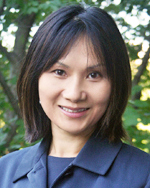
Emphasis
Overall emphasis is on the engineering of novel image-guided interventions to improve outcomes of interventional procedures. This can include developments in hardware, software, and methodologies to improve guidance, navigation, visualization, tissue differentiation, and treatment outcomes. In addition, emphasis includes technologies that expand needed procedural access for individuals otherwise excluded by disease characteristics, co-morbidities, and other parameters.
Additional Emphasis
Image-guided interventions may use supporting technologies relevant to other NIBIB-supported program areas, including but not limited to:
- Various imaging technologies
- Molecular Probes and Imaging Agents
- Biosensors and Physiological Detectors
- Image Processing and Visual Perception
- Artificial Intelligence, Machine Learning, and Deep Learning
- Robotics
Examples include image-guided interventions for non-invasive procedures, minimally invasive procedures, open surgery, and radiation treatment such as:
- Guidance for focused ultrasound treatment
- Navigation for minimally invasive needle biopsy
- Intraprocedural delineation of tumor margins
- Intra-operative augmented reality visualization of therapy
Note that image-guided interventions may support operator-directed, non-robotic procedures as well as robotic procedures.
Areas of priority include development of real-time or near real-time novel image-guided technologies, with robust procedural direction or a robust receiver operating characteristic curve. In addition, cost-efficient technologies, appropriate for low resource settings, and/ or applicable to multiple types of interventions are strongly encouraged.
Related News
In an effort to greatly expand accessibility, this compact fluorescence-guided surgery system, evaluated in mice, is crafted from cost-effective and off-the-shelf components.
NIBIB-funded researchers are developing an autonomous robot that can perform bowel surgery with minimal assistance from a surgeon. In preclinical models, the robot outperformed expert surgeons when compared head-to-head.


